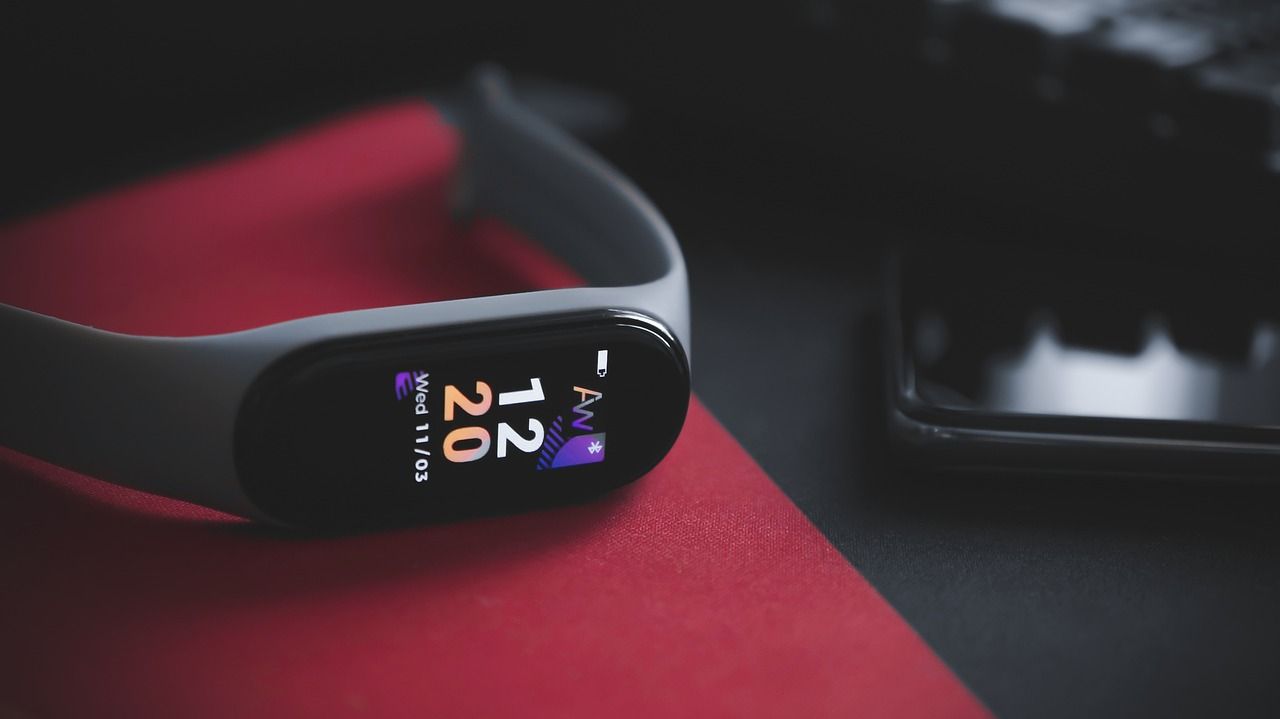Samsung has officially tossed its hat into the ring of smart wear, unveiling the much-anticipated Samsung Galaxy Ring. This introduction to smart rings marks Samsung's expansion into a relatively new territory where simplicity and sophistication meet cutting-edge technology.
Design and Physical Attributes

Photo by Jerry Kavan on Unsplash
When the Samsung Galaxy Ring first burst onto the scene, its design immediately garnered attention for its sleek, minimalist aesthetic. Unlike bulkier smartwatches, the Galaxy Ring speaks to a segment of health and tech enthusiasts looking for less obtrusive wearables. Its design has been carefully tailored to blend into daily life, essentially invisible yet always at work.
Color Variants and Material Finish
The Galaxy Ring is available in a trio of sophisticated finishes: Ceramic Black, Gold, and Platinum Silver. Each finish has been chosen to appeal to various personal styles while maintaining a high-end look that complements other jewelry or wrist-worn devices. While the outer aesthetic is elegantly designed, the inside of the ring features a black finish where the sensors and contact nodes reside, ensuring disturbances are minimal when it's worn.
Sizes and Comfort Considerations
Samsung is not just reaching out to tech fans, but also to a broad demographic with diverse preferences in wearability, offering the Galaxy Ring in sizes ranging from US 5 to US 13. This inclusivity ensures that users can select a ring that fits snugly, which is crucial as consistent skin contact is necessary for accurate sensor readings. Additionally, weight considerations have been meticulously managed with the ring weighing between 2.3 to 2.9 grams based on the size, making it comfortably light for day-to-day wear.
Key Features and Health Capabilities

Photo by Adafruit Industries / Openverse
The Galaxy Ring is more than just a statement of fashion; it packs a punch in terms of health features. This makes it a covert powerhouse for anyone keen on keeping a close eye on their physical and mental health.
Fitness and Activity Tracking
At its core, the Galaxy Ring features essential fitness tracking capabilities such as step count and heart rate monitoring throughout the day. Despite lacking a built-in GPS, it effectively notes daily physical activities, making it a viable option for users who prioritize a discreet yet functional fitness tracker.
Sleep Tracking and Heart Health Monitoring
Where the Galaxy Ring truly shines is in its advanced sleep tracking functions. The device measures continuous heart rate during sleep, sleep latency, respiratory rate, and overall night movement. These metrics aid in generating a comprehensive sleep analysis, which is further enhanced by Samsung's newly introduced 'Smart Sleep Analysis' feature in its health app. Additionally, the Ring boasts ECG and PPG sensors for heart health, capable of providing valuable data on heart rate variability and identifying irregular heart rhythms.
Compatibility with Existing Devices and Apps
Designed to seamlessly integrate into the Samsung ecosystem, the Galaxy Ring can be synchronized with other Samsung devices such as the Galaxy watches to enhance functionality. For instance, it works alongside the Galaxy Watch to improve sleep tracking accuracy, creating a holistic view of a user’s health. Moreover, its compatibility extends to apps like the Natural Cycles for menstrual tracking, using a combination of skin temperature and heart rate data.
In summary, the Samsung Galaxy Ring offers a blend of refined design, discretion in wearing, and powerful health monitoring tools, making it a top contender in the smart ring market and a desirable gadget for health-focused individuals.
User Interface and Experience

Photo by Nachiket Save / Pexels
The Samsung Galaxy Ring presents a unique take on wearable tech with its elegant design that eschews a conventional display. The absence of a screen means interacting with the device differently than you would with a smartwatch or a typical fitness band. Let’s delve deeper into its user interface and how this influences your experience.
Absence of a Display and Navigation
The Samsung Galaxy Ring prioritizes a minimalist design over visual interfaces. Unlike its competitors that spot small screens, the Galaxy Ring has no display at all. This means all interactions with the device occur through the Samsung Health app on your smartphone. This design choice leads to both pros and cons: it enhances the ring's aesthetic and comfort but limits direct interaction capability. Users looking for immediate feedback from the device might find this feature limiting, although it does increase the gadget's battery life and overall durability by reducing hardware vulnerability.
Battery Life and Charging Solutions
When it comes to battery life, the Samsung Galaxy Ring is designed to impress. Equipped with three different battery sizes—17 mAh, 18.5 mAh, and 22 mAh—the battery life varies based on the ring size. Larger rings house bigger batteries, potentially offering longevity of up to nine days on a single charge, a notable improvement over many smartwatches and fitness bands that require more frequent charging. The charging solution is also elegantly handled via a case similar to those used for earbuds, making the process both convenient and portable.
Market Position and Competition

Image by Phi Nguyễn from Pixabay
As Samsung ventures into the smart ring market, understanding its position relative to predecessors and competitors is crucial for assessing its potential success and consumer appeal.
Comparison with Predecessors and Current Competitors
The Samsung Galaxy Ring enters a market where few major tech players have trodden. Its direct comparison is often with the Oura Ring (from $299), known for detailed sleep tracking and health monitoring features. The Galaxy Ring matches many of Oura's offerings and attempts to exceed them by integration with Samsung’s extensive ecosystem, arguably enhancing functionalities such as sleep and fitness tracking. Furthermore, when considering Samsung's broader product offerings like the Galaxy Watch, the ring can be seen as a supplementary device rather than a replacement, which might appeal to a niche segment of users looking for discrete wearable options.
Pricing Strategy and Target Audience
Samsung’s pricing strategy for the Galaxy Ring appears to tread carefully around the competitive figure of $300, which aligns with the pricing of the Oura Ring and mid-range smartwatches. This places the Galaxy Ring in a competitive position relative to its primary features and target audience. Samsung seems to be targeting health-conscious consumers who value discreet design and extended battery life over the extensive interactivity offered by smartwatches. By making the Galaxy Ring compatible with both Android and iOS devices, Samsung widens its potential market, appealing to both existing Samsung users and those outside its ecosystem, potentially pulling a diverse group of users interested in health and wellness technologies.






